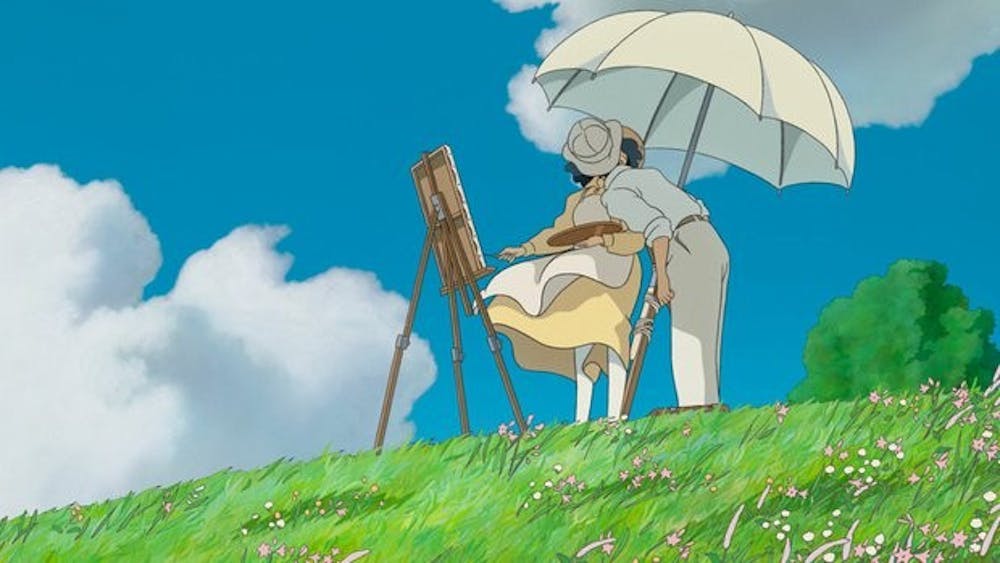The 73 year-old Japanese director Hayao Miyazaki, often praised for his Oscar winning animated film “Spirited Away,” has had a career that is unparalleled in its quality output. His latest and allegedly final project “The Wind Rises” is a masterpiece of animation, portraying a life as well as any biographical film in cinema history.
“The Wind Rises” opens with an aphorism from French poet Paul Valery which imparts the basic foil of wisdom that threads throughout the film, “The wind is rising! We must try to live!” Once the sentiment is imparted, the film begins on foggy rice patty plains as young Jiro Horikoshi (voiced by Joseph Gordon-Levitt, “Don Jon”) dreams of aviation. While flying, a zeppelin with a German iron cross emerges from the clouds, along with deformed black creatures and destroys his dream plane. It’s an elegant opening as well as an intelligent posturing of foreshadowing.
Waking up inspired from his dream, Jiro makes the bold decision to devote his life to the study of aviation engineering. “The Wind Rises” opens into piquant segments of Horikoshi’s storied career from his days at Mitsubishi to his doomed romance with Nahoko Satomi (voiced by Emily Blunt, “Looper”.)
Produced by the legendary Studio Ghibli (“From Up on Poppy Hill”), the animation is flawless. Miyazaki utilizes his penchant for impressionist painters, inspired by the likes of Georges Seurat and Paul Cezanne, giving “The Wind Rises” one of its best and romantic qualities.
Personal history dictates the uneasy history of pre- and post-war Japan. Horikoshi’s designs eventually manifested themselves into the A6M Zero fighter plane, which consequently became one of the most destructive forces utilized within the Japanese Navy’s arsenal.
Ethically much of its detractors have sensed Horikoshi’s life was one that was irrevocably detrimental for the industrial development of Japan. The film addresses issues from the frustration of a stagnant economy and the divergent poles of cultural heritage and economic growth, as well as the anticipated destruction that Jiro’s creation incurred.
Unconventional as it may seem, “The Wind Rises” benefits from its ability to balance its historical and artistic merits. The narrative craftsmanship on display recalls the best that the Golden Age of film had to offer and still does. Intermittently, Jiro is visited in his dreams by Count Gianni Caproni (voiced by Stanley Tucci, “The Hunger Games: Catching Fire”) who tells Jiro that aviation is akin to being an artist.
“The Wind Rises” suggests that nature precludes innovation. The curvature of a tuna bone inspires the wing design of a plane, which in turn allows for greater speed and inspires Horikoshi’s initial design of the Zero fighter. A closer read of this belief would suggest that Miyazaki’s creation is indeed anti-war. From scenes of the Great Kanto Earthquake of 1923, where Jiro imagines flying contraptions of destruction emerging from the hail of smoke to its uncertain ending, “The Wind Rises” goes to great lengths to show the dangerous nature of aeronautical engineering and its most ardent pleasures.
Though if this should be the last an audiences gets to see of Miyazaki, it is both a pleasure and a shame. The boundless creativity and magical realism on display doesn’t often appear in modern animation anymore. It should be no surprise that “The Wind Rises” has thematic ties with “Porco Rosso,” one of Miyazaki’s most political films despite the flighty subject matter of a pig bounty hunter.
“The Wind Rises” is a perfect summation of a career that spanned more than four decades, more so that the ten that Caproni believes an artist enjoys in life. “The Wind Rises” shows a life illustrated with great import, spectacularly voice cast and encased with elegant esteem.





